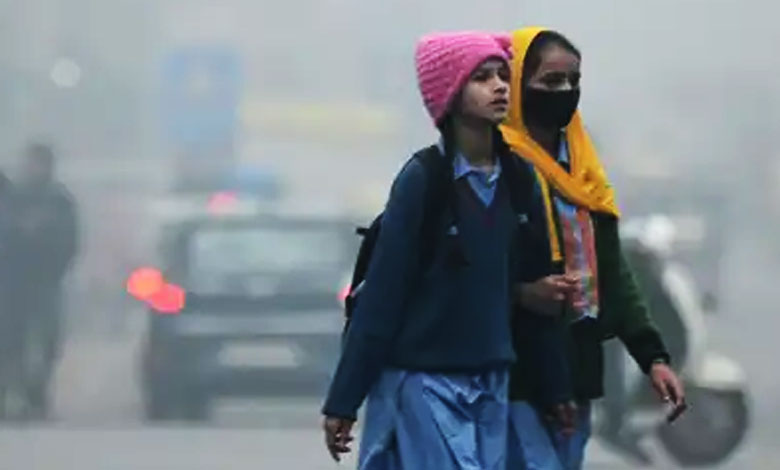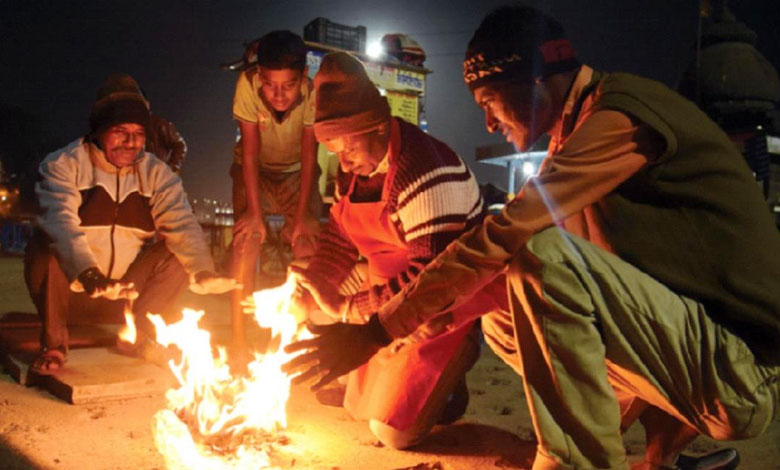Hyderabad Weather Update: Faces Severe Air Pollution Crisis Amid Freezing Temperatures
Hyderabad is experiencing severe air pollution as temperatures drop to 8°C, with AQI levels exceeding safe limits. Areas like Sanath Nagar and Gachibowli are heavily affected, leading to a rise in respiratory illnesses. Experts call for urgent action to control pollution and protect public health.

Hyderabad is grappling with a severe air pollution crisis as temperatures in several parts of the city plummet to as low as 8°C, contributing to the worst pollution levels of the season.
The Air Quality Index (AQI) has soared past 150 across multiple localities, signaling a dangerous spike in harmful pollutants such as PM 2.5, PM 10, and NO2.
The pollution levels have reached alarming levels, with certain areas reporting concentrations up to 100 times higher than the World Health Organization’s (WHO) recommended limits.
Worst Affected Areas in Hyderabad
Localities such as Sanath Nagar, Somajiguda, Gachibowli, Kokapet, Punjagutta, and Old City are among the hardest hit by the pollution crisis. In Sanath Nagar, PM 2.5 levels reached a staggering 500 µg/m³, 100 times higher than the WHO guideline of 5 µg/m³.

Somajiguda recorded PM 2.5 levels of 280 µg/m³, while areas like Kokapet, Kompally, and Ramachandrapuram exceeded 200 µg/m³. PM 10 levels were also dangerously high, with ECIL registering 204 µg/m³, Gachibowli at 160 µg/m³, and Old City at 158 µg/m³, all surpassing safe levels.
Health Implications of Rising Pollution Levels
The hazardous air quality is causing a surge in respiratory illnesses across the city. Cases of asthma, chronic coughs, lung infections, and other respiratory conditions are increasing at an alarming rate. Dr. Tejas Jogi, a pulmonologist, emphasized the severe health risks posed by the rising pollution, particularly during the winter season.
“Pollution levels are rising year-round, but winter magnifies the impact. Temperature inversion traps pollutants close to the ground, worsening conditions. PM 2.5 particles penetrate deep into the lungs, weakening immunity and increasing risks of respiratory infections like pneumonia and bronchitis,” Dr. Jogi explained.
Between 2008 and 2020, Hyderabad witnessed an average of 5,552 deaths annually due to air pollution, with 1,597 fatalities reported in 2023 alone. This grim statistic positions Hyderabad as the sixth deadliest city in India for pollution-related deaths. Vulnerable groups, including children with developing lungs, are at heightened risk during this environmental crisis.
Temperature Inversion: A Key Factor in Winter Pollution
Environmental experts point to temperature inversion as a primary cause of the worsening air pollution during winter. Padmaja K, a pollution researcher, explained the phenomenon: “During the night, the ground cools rapidly, trapping cooler air beneath a warmer layer.
These traps pollutants close to the ground and prevents them from dispersing. Weak winter winds exacerbate the problem, allowing the pollutants to accumulate.”
Related Article | Delhi’s Air Quality Improves to ‘Poor’ Category Amid Cold Wave and Dense Fog
The Urgent Need for Effective Measures
Experts are calling for urgent action to address the city’s pollution crisis. To reduce the harmful effects, measures like strengthening public transport systems, promoting cycling and walking, phasing out old vehicles, and cracking down on adulterated fuels are critical steps.
Improved traffic management, stricter monitoring of industrial emissions, and regulation of construction activities are also essential to mitigate pollution.
Environmentalist Bhaskar Reddy highlighted that simple, practical measures could make a significant difference in controlling pollution.
“Installing curtains around construction sites and sprinkling water to reduce dust can significantly reduce the pollution levels,” he stated. Reddy emphasized the importance of enforcing existing environmental laws and penalizing violators to slow down climate change and reduce pollution in the city.
